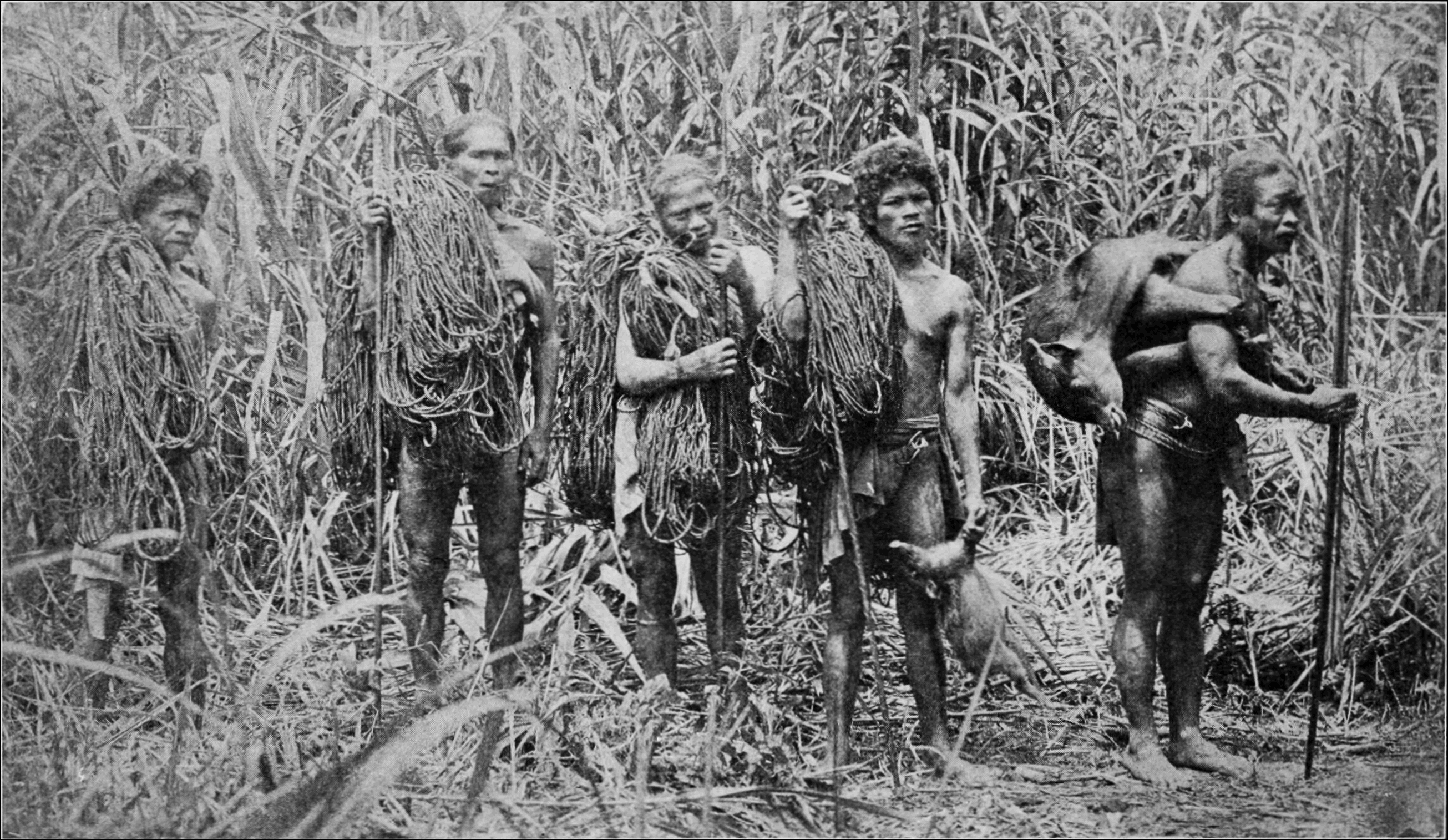|
Mount Bintuod
Mount Bintuod or Mount Dalimanoc is a mountain in the Sierra Madre range in the municipality of Alfonso Castañeda in Nueva Vizcaya province. It is probably the highest peak in the Philippines longest mountain range with a first GPS-based measurement of above sea level, from an expedition in April 2012. There are no records of the first ascent, but local tribe people have long established paths. In some maps this peak is misidentified as Mount Dalimonoc, an actually lower peak adjoining Bintuod to the west. The forested peak can be reached in a two days one night return hike from Barangay Lipuga, Alfonso Castañeda, Nueva Vizcaya. This rural area of the Philippines is traditional land of the Bugkalot or Ilongot tribe and was only opened to a road via Carranglan, Nueva Ecija in 1997 when a hydropower dam was constructed in the Casignan River of the same valley. See also * List of mountains in the Philippines * List of Southeast Asian mountains The following is a list ... [...More Info...] [...Related Items...] OR: [Wikipedia] [Google] [Baidu] |
Sierra Madre (Philippines)
The Sierra Madre is the longest mountain range in the Philippines. Spanning over , it runs from the province of Cagayan down to the province of Quezon, forming a north–south direction on the eastern portion of Luzon, the largest island of the archipelago. It is bordered by the Pacific Ocean to the east, Cagayan Valley to the northwest, Central Luzon to the midwest, and Calabarzon to the southwest. Some communities east of the mountain range, along the coast, are less developed and so remote that they could only be accessed by taking a plane or a boat. The country's largest protected area, the Northern Sierra Madre Natural Park, is situated at the northern part of the range in the province of Isabela. The park is in the UNESCO tentative list for World Heritage List inscription. Environmentalists, scholars, and scientists have been urging the government to include the other parks within the Sierra Madre mountains for a UNESCO site that would encompass the entire mountain ra ... [...More Info...] [...Related Items...] OR: [Wikipedia] [Google] [Baidu] |
Mountain
A mountain is an elevated portion of the Earth's crust, generally with steep sides that show significant exposed bedrock. Although definitions vary, a mountain may differ from a plateau in having a limited summit area, and is usually higher than a hill, typically rising at least 300 metres (1,000 feet) above the surrounding land. A few mountains are isolated summits, but most occur in mountain ranges. Mountains are formed through tectonic forces, erosion, or volcanism, which act on time scales of up to tens of millions of years. Once mountain building ceases, mountains are slowly leveled through the action of weathering, through slumping and other forms of mass wasting, as well as through erosion by rivers and glaciers. High elevations on mountains produce colder climates than at sea level at similar latitude. These colder climates strongly affect the ecosystems of mountains: different elevations have different plants and animals. Because of the less hospitable ... [...More Info...] [...Related Items...] OR: [Wikipedia] [Google] [Baidu] |
List Of Southeast Asian Mountains
The following is a list of some of the mountains of Southeast Asia. List of highest mountains See also *List of highest mountains *List of highest mountains of New Guinea *List of islands by highest point * List of ribus (summits in Indonesia with 1000 m topographic prominence) *Seven Summits References {{DEFAULTSORT:List Of Southeast Asian Mountains Mountains A mountain is an elevated portion of the Earth's crust, generally with steep sides that show significant exposed bedrock. Although definitions vary, a mountain may differ from a plateau in having a limited summit area, and is usually higher t ... ... [...More Info...] [...Related Items...] OR: [Wikipedia] [Google] [Baidu] |
List Of Mountains In The Philippines
The following is a partial list of mountains in the Philippines. Several of these are volcanoes, formed by subducting tectonic plates surrounding the archipelago. List This list contains most of the highest mountains in the country. It is limited to mountain peaks with, if known, an elevation of at least above sea level, and may include those considered as hills. The distinction between a hill and a mountain in terms of elevation is unclear and largely subjective, but a hill is universally considered to be less tall and less steep than a mountain. * ''Name'': mountains are sorted according to ''only name''s (without the "Mount" prefix) for easier reference in name and spelling variants. Unnamed peaks are ''italicized''. ''(note: to minimize clutter, citations for names are limited only to mountains with variant names, spellings, and/or those that currently do not have elevation data)'' * ''Elevation'': sorted in meters above sea level ''(note: Some mountains may contain sev ... [...More Info...] [...Related Items...] OR: [Wikipedia] [Google] [Baidu] |
Carranglan, Nueva Ecija
Carranglan, officially the Municipality of Carranglan ( ilo, Ili ti Carranglan; tl, Bayan ng Carranglan), is a 1st class municipality in the province of Nueva Ecija, Philippines. According to the 2020 census, it has a population of 42,420 people. The municipality is home to the Pantabangan–Carranglan Watershed Forest Reserve. History Geography It is the province's largest municipality in terms of land area. Barangays Carranglan is politically subdivided into 17 barangay A barangay (; abbreviated as Brgy. or Bgy.), historically referred to as barrio (abbreviated as Bo.), is the smallest administrative division in the Philippines and is the native Filipino term for a village, district, or ward. In metropolit ...s. Climate Demographics Economy TourismSaint Nicolas of Tolentine Parish Church of Carranglan [...More Info...] [...Related Items...] OR: [Wikipedia] [Google] [Baidu] |
Ilongot People
The Bugkalot (also Ilongot or Ibilao) are a tribe inhabiting the southern Sierra Madre and Caraballo Mountains, on the east side of Luzon in the Philippines, primarily in the provinces of Nueva Vizcaya and Nueva Ecija and along the mountain border between the provinces of Quirino and Aurora. They are also commonly referred to as "Ilongot", especially in older studies, but nowadays, the endonym Bugkalot is preferred in modern ethnic research. They were formerly headhunters. Presently, there are about 87,000 Bugkalots. The Bugkalots tend to inhabit areas close to rivers, as they provide a food source and a means for transportation. Their native language is the Bugkalot language, currently spoken by about 50,000 people. They also speak the Ilocano & Tagalog languages. Culture In Ivan Salva's study in 1980 of the Bugkalots, she described "gender differences related to the positive cultural value placed on adventure, travel, and knowledge of the external world." Bugkalot men ... [...More Info...] [...Related Items...] OR: [Wikipedia] [Google] [Baidu] |
Mount Dalimonoc
Mount is often used as part of the name of specific mountains, e.g. Mount Everest. Mount or Mounts may also refer to: Places * Mount, Cornwall, a village in Warleggan parish, England * Mount, Perranzabuloe, a hamlet in Perranzabuloe parish, Cornwall, England * Mounts, Indiana, a community in Gibson County, Indiana, United States People * Mount (surname) * William L. Mounts (1862–1929), American lawyer and politician Computing and software * Mount (computing), the process of making a file system accessible * Mount (Unix), the utility in Unix-like operating systems which mounts file systems Displays and equipment * Mount, a fixed point for attaching equipment, such as a hardpoint on an airframe * Mounting board, in picture framing * Mount, a hanging scroll for mounting paintings * Mount, to display an item on a heavy backing such as foamcore, e.g.: ** To pin a biological specimen, on a heavy backing in a stretched stable position for ease of dissection or display ** To p ... [...More Info...] [...Related Items...] OR: [Wikipedia] [Google] [Baidu] |
Municipalities Of The Philippines
A municipality ( tl, bayan/munisipalidad; hil, banwa; ceb, lungsod/munisipalidad/munisipyo; pag, baley; pam, balen/balayan; bcl, banwaan; war, bungto/munisipyo; ilo, ili) is a local government unit (LGU) in the Philippines. It is distinct from ''city'', which is a different category of local government unit. Provinces of the Philippines are divided into cities and municipalities, which in turn, are divided into barangays (formerly barrios) – ''villages''. , there are 1,488 municipalities across the country. A municipality is the official term for, and the official local equivalent of, a town, the latter being its archaic term and in all of its literal local translations including Filipino. Both terms are interchangeable. A municipal district is a now-defunct local government unit; previously certain areas were created first as municipal districts before they were converted into municipalities. History The era of the formation of municipalities in the Philippines s ... [...More Info...] [...Related Items...] OR: [Wikipedia] [Google] [Baidu] |
Luzon
Luzon (; ) is the largest and most populous island in the Philippines. Located in the northern portion of the Philippines archipelago, it is the economic and political center of the nation, being home to the country's capital city, Manila, as well as Quezon City, the country's most populous city. With a population of 64 million , it contains 52.5% of the country's total population and is the fourth most populous island in the world. It is the 15th largest island in the world by land area. ''Luzon'' may also refer to one of the three primary island groups in the country. In this usage, it includes the Luzon mainland, the Batanes and Babuyan groups of islands to the north, Polillo Islands to the east, and the outlying islands of Catanduanes, Marinduque and Mindoro, among others, to the south. The islands of Masbate, Palawan and Romblon are also included, although these three are sometimes grouped with another of the island groups, the Visayas. Etymology The n ... [...More Info...] [...Related Items...] OR: [Wikipedia] [Google] [Baidu] |
Cities Of The Philippines
A city ( fil, lungsod/siyudad) is one of the units of local government in the Philippines. All Philippine cities are chartered cities ( fil, nakakartang lungsod), whose existence as corporate and administrative entities is governed by their own specific municipal charters in addition to the Local Government Code of 1991, which specifies their administrative structure and powers. As of December 17, 2022, there are 148 cities. A city is entitled to at least one representative in the House of Representatives if its population reaches 250,000. Cities are allowed to use a common seal. As corporate entities, cities have the power to take, purchase, receive, hold, lease, convey, and dispose of real and personal property for its general interests, condemn private property for public use ( eminent domain), contract and be contracted with, sue and exercise all the powers conferred to it by Congress. Only an Act of Congress can create or amend a city charter, and with this city charte ... [...More Info...] [...Related Items...] OR: [Wikipedia] [Google] [Baidu] |
Alfonso Castañeda, Nueva Vizcaya
Alphons (Latinized ''Alphonsus'', ''Adelphonsus'', or ''Adefonsus'') is a male given name recorded from the 8th century (Alfonso I of Asturias, r. 739–757) in the Christian successor states of the Visigothic kingdom in the Iberian peninsula. In the later medieval period it became a standard name in the Hispanic and Portuguese royal families. It is derived from a Gothic name, or a conflation of several Gothic names; from ''*Aþalfuns'', composed of the elements ''aþal'' "noble" and ''funs'' "eager, brave, ready", and perhaps influenced by names such as ''*Alafuns'', ''*Adefuns'' and ''* Hildefuns''. It is recorded as ''Adefonsus'' in the 9th and 10th century, and as ''Adelfonsus'', ''Adelphonsus'' in the 10th to 11th. The reduced form ''Alfonso'' is recorded in the late 9th century, and the Portuguese form ''Afonso'' from the early 11th. and ''Anfós'' in Catalan from the 12th Century until the 15th. Variants of the name include: ''Alonso'' (Spanish), ''Alfonso'' (Spanish ... [...More Info...] [...Related Items...] OR: [Wikipedia] [Google] [Baidu] |




